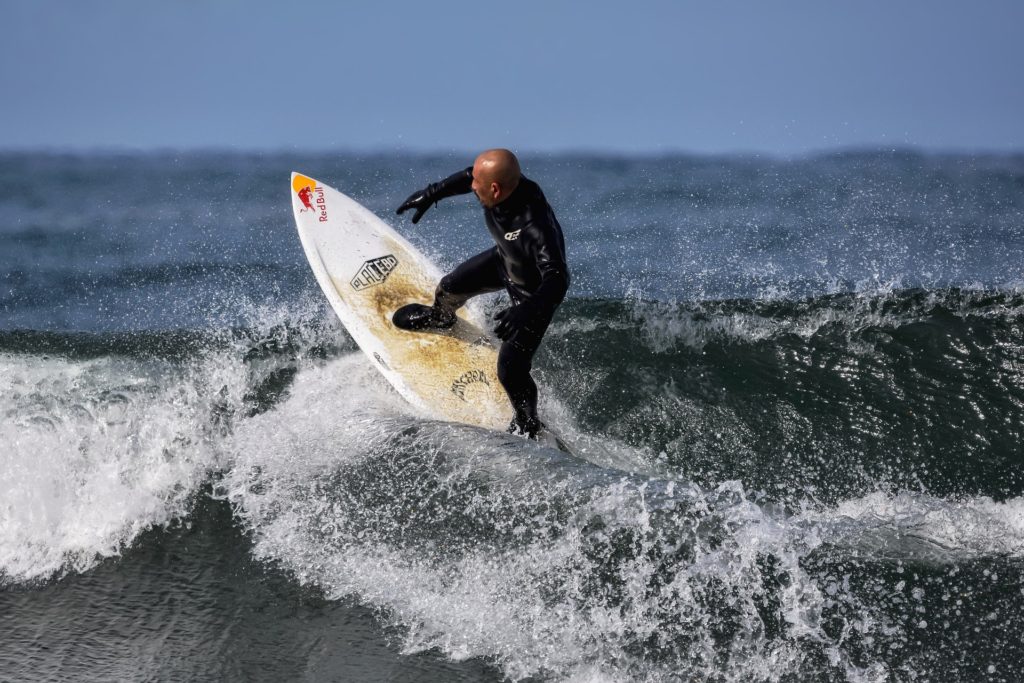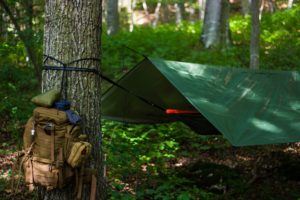Lining up a perfectly tubing wave is a challenging thrill, but before a surfer can catch those waves, they have to understand how to read the waves as they crest, trough, and break.
What are wave zones? Different wave zones are caused by the force of the tides as they meet with the shore, where surfers must enter the ocean. There are three basic wave zones; the white water zone, the inside where waves break or impact, and the area beyond the break known as outback or outside.
A crucial part of developing skills as a surfer is understanding wave zones, types of waves, and the techniques to ride them. Different waves and conditions require different skills to take on, and the ability to forecast waves will allow surfers to line up the choicest peaks and barrels.
The Different Wave Zones

Waves are caused by forces the gravitational pull of the moon and changing tides, underwater currents, earthquakes, and global winds. Surfing harnesses these ageless and unpredictable forces for sport and pleasure.
Surfing is unique in that it utilizes the forces of nature, making the sport that much more difficult, nuanced, and exciting. Whether a novice, a vacation surfer, or a habitual, professional, being able to read the behavior waves as they come into the shore is a necessary skill.
Just as important as knowing wave zones and recognizing wave types is researching wave conditions, water conditions, and always wearing the proper protective equipment for the situation, from wet suits to helmets.
The surfing community is a highly social one, and along with reading the waves comes learning proper surfing etiquette and communicating with the surfers in the area. If traveling, locals can be an abundant resource of knowledge.
How Ocean Waves Form
In short, waves are caused by energy circulating through the ocean. Most waves are caused by winds, but differences in water temperature, earthquakes, and currents push energy around in the ocean and that energy ripples to the shore as waves.
Waves in the open ocean drive a column of water forward beneath the surface just as water is driven above the surface. As the ocean floor becomes shallower, the underwater column of water is pushed up into the high crests that surfers ride.
These crests eventually break because of the same forces, causing the dramatic roll and crash of waves as they enter the impact zone.
Waves occur at all times, but fierce storms, strong winds, and changing tides can change how waves act as they approach the shore. The predictable pattern of waves becomes uneven as waves become stronger and faster or weaker and slower as conditions change.
Before setting out on a surf, it is important to learn the names of different surf zones, how waves act in that area, and what conditions are changing the pattern of waves as they crash into the shore.
The White Water

The home of young and novice surfers, the white water is the space at the shore where waves become aerated and foamy as they approach the shore.
The white water zone is safe and comfortable. Usually occurring in water no more than waist or chest-deep, surfers can feel secure while going for mild waves. This zone won’t require much paddling and is perfect for surfers with limited skill or strength.
The broken sections of waves in the white water don’t offer the most exciting surfing, but surfers who are learning and young surfers can enjoy these short crests. Surfers who learn in the white water save time and energy by building skills in a safe environment
Different wave zones are home to different types of waves, but the white water is all low-to-medium energy aerated, broken waves, making it easy to focus on balance and skill while riding small peaks.
The Inside or Impact Zone
As waves roll in, they break to create the aerated waves of the white water. The area where green, unbroken waves crash and become white water is called the inside or the impact zone for the impact that the waves make while they approach the shore.
The impact zone is not a place for surfing; rather, advanced surfers spend as little time in the impact zone as possible, rolling into the outside or outback to catch higher peaks and lower troughs than are available in the white water.
Home to the highest energy levels of waves, the impact zone can be especially dangerous and learning to navigate it is essential for becoming an advanced surfer. Cross the impact zone with caution.
It takes strong and swift paddling and maneuvering to get into or through the impact zone, making it difficult for kids and other young or novice surfers.
Outside or Outback
Once a surfer gets through the impact zone, the medium-to-high energy waves of the outside or outback are available to line up and ride. The outback and offers those perfect, picturesque peaks and barrels as surfers approach the impact zone.
Sometimes, surfers spend a lot of time sitting in the outback, riding the peaks and troughs, and waiting for the perfect wave to roll into the impact zone. This is where professional surfers line up and catch waves.
Types of Waves

There are a number of factors that will affect the types of waves that will occur, and learning how the tides, wind, and surf zones coordinate to produce waves is important. Ultimately, though, waves have a characteristic pattern, and the parts of a wave are few.
Different parts of the wave have varying energy levels, which can also be affected by the tide. We’ve already covered white water waves; the following types happen in the outside and impact zones.
The Flats
The slowly rolling stretches of peaks, the highest point of a wave, and troughs, the lowest point, are called the flats for the horizontal line in front of a peak. This is a low energy zone that will slow a surfer’s descent on a wave.
The flats are utilized to perform a bottom turn, converting vertical energy into horizontal energy and allowing the surfer to navigate along the wave.
The Shoulder
The shoulder is a low energy zone just before the impact zone that surfers will ride at the end of a run to safely end the surf. Surfers who aren’t accessing or exiting a tube ride avoid the shoulder.
The Open Face
The primary surface of the wave, the open face between the shoulder and the lip where surfers ride and perform maneuvers. Sandwiched between the shoulder and the pocket, this area acts as a bridge between gaining speed and slowing down.
A ride through the open face of a wave is the quintessential surfing experience that isn’t offered by the whitewater and the reason that surfers brave the impact zone.
The Pocket
Also sometimes known as the curl, this is where the wave begins to complete its cycle and break. The pocket is a high energy zone that surfers can enter from the face to gain momentum as they prepare to perform maneuvers.
The pocket contains the optimal, peak energy of the wave and surfing it will grant maximum speed but comes an increased risk in such close proximity to the peak of the wave as it approaches the impact zone.
The Lip
Where the top of the wave curls over and as it enters the impact zone is called the lip, and it is an unstable region of the wave that can quickly evolve and begin to fall as the wave rolls toward the shore.
The lip can be ridden for a while but only with caution, because it will eventually fall over and as the wave breaks.
Wave Shapes
A hollow wave is a wave with a steep, tall open face. These waves can be fun and challenging to ride, especially when over shallow water, which can help hollow waves to form.
If the impact zone is near a dramatic change in the elevation of the ocean floor, waves are more likely to barrel or tube which is when the lip and the shoulder come together near the end of the wave’s cycle to form a tube that can be ridden through, on occasion.
If the waves seem likely to break at irregular intervals or have a short cycle, some surfers call them peeling or crumbly waves, because they break quickly and can’t be ridden for long.
Sometimes two waves will double up and become more powerful. These waves will be an anomaly in the pattern and present greater energy and momentum but can be riskier.
A rogue wave is like a double wave in that it is a much larger, or possibly much smaller, wave than is usual for that situation. Watch for rogue waves to know which to ride and which to sit out.
Why it’s Important to Know Surfing Conditions

All of these wave types and patterns occur when different surfing conditions coordinate. It is important to know what types of waves you are riding and to learn where to ride, but it is equally as important to learn the causes of these wave shapes, types, and surfing conditions.
Some beaches are exposed to harsh sunlight, while others are driven by chilling winds and the tides. Each surf location will have different topographical features on the ocean floor and currents that run beneath the surface of the ocean.
All of these conditions impact the types of waves you will have and how you should approach and ride them. If possible, find a guide for your surf spot before heading out so you can know which of the following surf conditions to expect.
Surfing Conditions
Tides
The gravitational pull of the moon on the oceans as it orbits the Earth results in shifting tides. The time of day and, consequently, the tide will create different wave shapes and types.
It is important to check the tides in your location before beginning a surf. High and low tides will happen at different times of on different shores as the seasons change.
High tides give waves more energy. They roll slower but are bigger, thicker, and crash harder. Skilled surfers can enjoy high momentum and long rides at high tide. High tide waves are more likely to tube, and less likely to crumble.
Low tides create waves that roll and crash faster and have steeper peaks and lower troughs. Waves in low tide deliver faster, shorter rides, and the waves are more volatile and likely to break.
Before you set out on a surf, it is imperative to check which tide is in to understand where the different wave zones will fall and to prepare for the waves that you will encounter.
Wind
Wind, from all directions, affects the types and strength of waves that form. Discovering the direction of the wind on the day of your surf is just as important as checking the tides.
Light breezes might not impact waves much, but as wind strength increases, so does its effect on waves. Most beaches will designate when winds or moderate or strong and warn surfers and others of the potential danger.
The direction of the wind determines the effect it has on waves.
- Cross-shore winds travel across the shore and ocean and will cause waves to break or crumble uncharacteristically. Surfers adjust their positioning when lining up a wave to account for strong cross-shore winds.
- Onshore winds blow towards the shore from the sea, causing waves to break and flatten quickly before reaching the shore. When planning a surf, onshore winds could make surfing difficult or impossible.
- Offshore winds are the opposite of onshore and blow from the shore out to sea. These are the favorite of surfers as they support the open face of waves longer. Offshore winds might also smooth the open face, making it easier to predict waves and surf.
Sunlight and Temperature

While harsh sunlight or cold temperatures might not affect the surface of the ocean, they can change a surfing experience if unprepared.
Some surf spots get harsh sunlight which carry harmful UV rays for most of the day. Sunscreen and protective headgear or a helmet will be a necessity, of course. As the sun reflects off of the water, it might make scouting and lining up the perfect wave more of a challenge.
Cold temperatures stiffen the limbs and chill the water. A wetsuit and waterproof surfing helmet can help you to stay warm in the iciest of oceans while keeping your nimble and at peak performance.
Ocean Floor
Whether the ocean floor is sandy or rocky, shallow or deep, or a bed of coral, the ocean floor plays a factor in surf preparation.
If the ocean floor has dramatic topographical changes, this can alter wave size and where they break. A shallow ocean, though sometimes dangerous, can help certain wave types to form.
The ocean floor where you will surf will determine some of the protective equipment you will need. Coral can be especially dangerous for surfers, causing lacerations and even concussions if a surfer wipes out without the right gear.
Rocky shores or ocean floors can be just as dangerous as coral. It is important to wear a helmet whenever you surf, but especially in risky conditions like harsh weather, wind, or when the ocean floor is a threat.
Currents
Just off the coast of many continents and islands, giant, globe-spanning currents run swiftly beneath the ocean surface. Surfers who venture far into the outback will want to be aware of any major underwater currents.
Smaller underwater currents caused by the breaking of waves called riptides can also occur. Riptides are dangerous for young surfers, as they can run under white water zones, or for any surfer who wipes out without the proper gear.
When combining riptides and other currents with crowded beaches or a rocky ocean floor, the situation can quickly become highly risky. It is important to assess all of the combined conditions before heading out on a surf.
Wildlife
This goes without saying, but the oceans where we surf are home to turtles, fish, dolphins, and sharks, and surfers should be respectful of their habitats.
Most sea creatures are happy to share their space with surfers, but sharks and other large sea mammals can pose a great risk. Shark attacks on surfers are admittedly extremely rare, but not unheard of. Take caution when entering waters where sharks, whales, or other creatures swim.
Surfing Protection
Surfing is only possible because of the meeting of natural resources; as the ocean meets the shore, waves begin to break and create surfaces over which surfers soar.
In some countries and U.S. states, the natural resources that provide recreational and aesthetic spaces and economic benefits are protected by law. Protections are established so that beachgoers’ and surfers’ access to the ocean is uninhibited.
This includes disallowing corporate development along the shore, protecting the ocean from pollution, and ensuring that natural ecosystems remain healthy and undisturbed, and ensures that the public has access to those resources.
You can help by researching and supporting local organizations that lobby for surfing zone protections in your state or country.
Surfing Etiquette

In addition to being aware of surfing conditions, there is a certain etiquette, the rules of the waves, that surfers share. Surfers are expected to be respectful of other surfers, to know their own skills and limits, and to communicate with other riders.
When surfing, it is expected that you will stay aware of the other surfers around. Stay out of the way of others’ rides while paddling out and don’t paddle out through a wave someone is riding. This could cause dangerous collisions as the surfer is moving at high speeds across the waves.
Typically, only one surfer rides each wave. When lining up, be sure to communicate with other surfers waiting for the perfect wave. If you do decide to share a face with another surfer, be sure to communicate your location often, loudly, and clearly.
Before even entering the ocean, though, it is important to spend time getting to know the surf conditions, watching the waves, and judging the height and skill required to ride.
Surfing Forecasting
Most surfers spend about 30 minutes watching the waves before they begin their surf. That time is spent monitoring the pattern of waves, where they break, if they are prone to hollow or crumble, and determining the influence of the wind or ocean floor.
Forecasting and reading surf conditions will help you to decide what to ride for your skill level. If you are a beginner, surfing with a friend or a group will allow you to get a second opinion about waves and provide some support in case of a wipeout.
Finding Your Comfort Zone

When you begin to surf, the ability to assess and predict wave types and patterns will become an invaluable part of your surfing experiences. Once you know how to read waves and start to ride, you’ll know which waves challenge you and which waves are comfortable and easy to maneuver.
Even experienced surfers sometimes have trouble reading a new surf spot. Maybe you’re not accustomed to overhead waves, but all you see are tall, slow-moving waves for the day.
Challenging your skills is the only way for them to develop, but surfing comes with its share of risks. Riding big, gnarly waves can deliver the thrill of a lifetime, but you don’t want to wipe out and endanger yourself or other surfers by riding waves well beyond your skill level.
Finding the perfect path through to paddle, quickly and decisively, through the impact zone as you line up waves take commitment and determination. As you pop up quickly, make sure to watch the wave ahead of you and predict the path of your ride.
As you climb to the crest of a wave and prepare for your ride, any hesitation can mean a disastrous wipeout without action. But, this is all part of the learning experience, and mistakes are opportunities for development.
Eventually, you will be able to take on bigger and bigger waves as you learn to read and predict their patterns and hone your skills.
Protective Gear
Understanding wave zones, types, and shapes provides an increased level of security and protection to surfers. If you can accurately predict where the next wave will roll and how big or gnarly it will be, you can make smart decisions about which waves to catch.
This knowledge is no substitute, however, for the proper protective equipment. The culture surrounding helmets and other protective equipment in surfing does not always encourage maximum safety.
To learn more about the best types of surf helmets, check out this article.
It might seem inconvenient and cumbersome or even silly to wear a helmet and other protective gear while surfing, but even the most skilled professional surfers wipe out. Without the right gear, surfers are at higher risk of lacerations or head injury.
Concussions are prominent in surfing, and receiving a concussive blow underwater can be especially dangerous. Concussions can lead to lifelong nerve or brain damage, and the consequences can be more extreme.
There is no amount of knowledge that can protect you from the mighty and unpredictable forces of the ocean. Protective gear is another necessary layer of security when riding waves.
Before Your Next Surf

The wind, waves, currents, weather, and ocean floor all combine to produce the surfing conditions. How you navigate each surf will be determined by the unique surf conditions of the situation.
Before paddling out, decide if it is safe to surf. Do you have all the right gear and equipment? Is the beach too crowded? Are there any posted warnings about riptides or undercurrents?
Spend some time watching just the waves. How big are they, and what shape are they taking? How fast are they rolling in and breaking? Experienced surfers will know what size and speed of waves they are comfortable riding.
Remember that the tides and winds will always have an effect on the waves. Even when surfing a familiar spot, it is crucial to determine the wind direction and wind intensity and to know whether the ocean is in high tide or low tide.
There are descriptions above of how winds and tides change waves. Surfers should be familiar with the ways that different winds and tides change wave speed and strength.
Every time you surf, make a mental note of the surf conditions for future reference. This way, you can know what to expect from the same surf conditions in the future and can more quickly and adaptably read waves.
Understanding wave zones, wave types and shapes, and all of the conditions that produce the environment for surfers to enjoy and master are crucial to becoming a strong surfer.
Put your new skills to the test next time you go surfing. Try to spot different wave types, how the tides and winds change the wave you catch, and remember to practice caution and wear all necessary protective gear.






